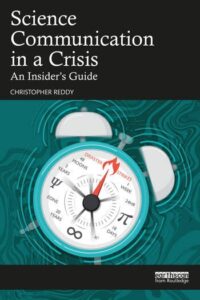 As I sit to write this, our old friend the CoVid-19 virus is back in the news – specifically the mystery surrounding its origin. I won’t bother to link any of the stories here as they curiously all seem to be appearing in publications with a suspiciously similar, highly partisan editorial position, none of which carry any scientific reliability, and all seem to be focused on the production of far more heat than light upon their subject. Alas, such has very much become the Zeitgeist of our present time. Ours is an age long on ignorance and gullibility, and short on attention span. If a story, particularly complex one one related to a societal emergency, seems dramatic and happens to align with one’s preferred view of the world, or emanates from the mouth or pen of someone seen as a leader or champion of one’s own faction, it is accepted, regardless if it has any discernible veracity, or even any reliable facts or sources to support it.
As I sit to write this, our old friend the CoVid-19 virus is back in the news – specifically the mystery surrounding its origin. I won’t bother to link any of the stories here as they curiously all seem to be appearing in publications with a suspiciously similar, highly partisan editorial position, none of which carry any scientific reliability, and all seem to be focused on the production of far more heat than light upon their subject. Alas, such has very much become the Zeitgeist of our present time. Ours is an age long on ignorance and gullibility, and short on attention span. If a story, particularly complex one one related to a societal emergency, seems dramatic and happens to align with one’s preferred view of the world, or emanates from the mouth or pen of someone seen as a leader or champion of one’s own faction, it is accepted, regardless if it has any discernible veracity, or even any reliable facts or sources to support it.
For those whose job it is to provide the public, organizational (public or private) leaders, or other stakeholders with accurate and useful information and analysis, and when the story has at its center – or even around its perimeter – a scientific aspect, the challenge is made all the more difficult due to a general misunderstanding of what science is and how it works.
Into this ongoing scientific communication quandary Dr. Christopher Reddy introduces a collection of analyses and recommendations for those in such positions when faced with presenting important scientific information to audiences both large and small during times of profound uncertainty. Science Communication in a Crisis; An Insider’s Guide takes readers behind the scenes for close-up examinations and assessments of a number of recent crises that required elements of one or more scientific fields to be entered into the discussion thereof in order for it to be properly understood and meaningful actions to be undertaken.
Given the many destructive environmental and medical crises that have transpired these past few decades – the Deepwater Horizon accident, the North Cape oil spill, and of course the CoVid-19 pandemic – that necessitated scientific information and analyses being presented both to leaders and the general public in order for both solutions to be effected as well as public understanding to be achieved, this is a very timely book indeed.
